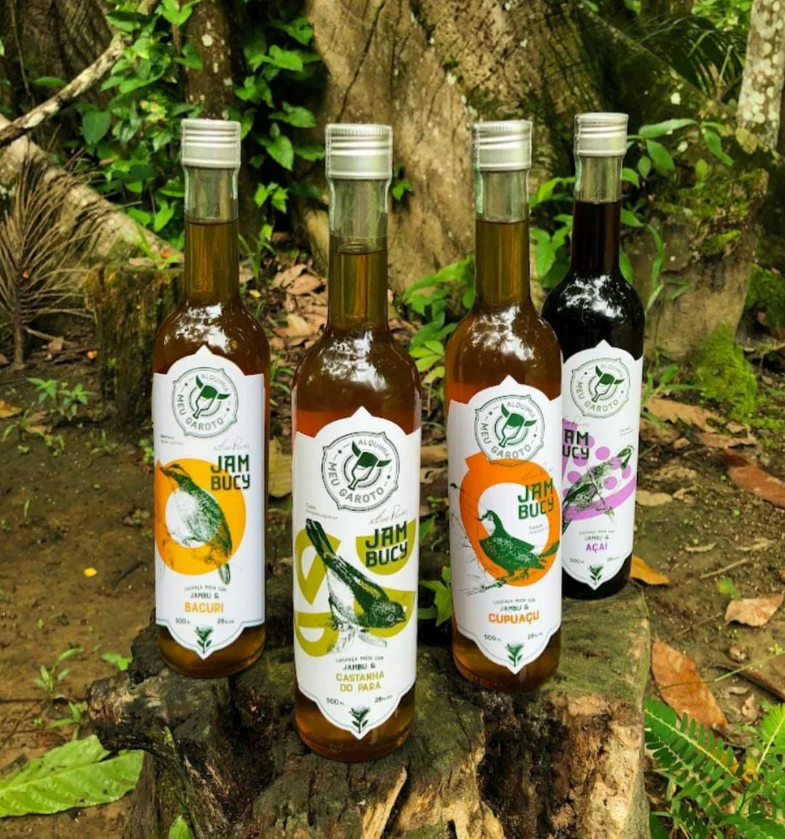
Exploring traditional brazilian cachaça: A guide for enthusiasts
Share
Brazilian cachaça is more than just a drink; it’s a part of Brazil’s cultural identity and history. If you’ve ever had the pleasure of sipping on this iconic Brazilian spirit, you know it has a unique flavor that sets it apart from other liquors like rum or tequila.
But what exactly makes Brazilian cachaça so special? How is it made, and why does it have such a distinct, vibrant taste? Whether you're an enthusiast who’s already hooked on its bold flavor or a newcomer curious about what this famous Brazilian liquor has to offer, this blogpost will take you on a journey to explore everything you need to know about cachaça.
From the meticulous process of sugarcane harvesting to the aging methods that shape its flavors, we’ll dive into the production steps that make Brazilian cachaça stand out. You’ll also learn about the different varieties available, how to enjoy them, and why it’s such a central part of Brazil's social culture—especially in the form of the famous Caipirinha cocktail.
So, grab a glass and join us as we explore the world of Brazilian cachaça—a true taste of Brazil in every sip!
Understanding Brazilian cachaça
Unlike other distilled spirits, such as rum, which is typically made from molasses, Brazilian cachaça is made from the freshest sugarcane juice. This key difference in its production gives cachaça a bright, grassy flavor that sets it apart and makes it a favorite for those looking for something distinct and flavorful.
What makes cachaça even more interesting is that it’s exclusively produced in Brazil, giving it a deep connection to the country’s culture and history. It’s so integral to Brazilian life that it’s often called “the soul of Brazil.”
The spirit must have an alcohol content between 38% and 48% ABV to be legally recognized as cachaça, ensuring it’s strong but smooth enough to enjoy on its own or mixed into cocktails.
The production process
1. Harvesting and fermentation
Like mentioned before, the journey of cachaça begins with the careful harvesting of sugarcane. The cane is crushed to extract the juice, which is then fermented.
In traditional methods, fermentation can last up to 36 hours, allowing for a more complex flavor development. In contrast, industrial processes may expedite fermentation, leading to differences in taste and aroma.
2. Distillation methods
Cachaça is distilled using two primary methods:
Pot still (artisanal)
This traditional method involves small-batch distillation in copper pot stills. It produces a spirit with a rich, complex flavor, often sought after by connoisseurs.
Continuous distillation
Utilized by larger producers, this method employs column stills for mass production. While efficient, it may result in a more neutral flavor profile.
3. Aging process
Aged cachaça, known as cachaça envelhecida, is matured in wooden barrels for at least one year.
The aging process imparts unique flavors to the spirit, influenced by the type of wood used. Brazilian producers often use native woods such as amburana, jequitibá, and balsam, each contributing distinct characteristics to the final product.
Exploring cachaça varieties
Cachaça comes in two main varieties:
Prata (Silver) cachaça
Prata, or Silver cachaça, is typically unaged and bottled immediately after distillation. This results in a clear, colorless spirit that retains the fresh, vibrant flavors of sugarcane. It's often used in cocktails, especially the iconic caipirinha, due to its clean taste and versatility.
Example:
Cachaça 51 Prata: Produced by Companhia Müller de Bebidas in Pirassununga, São Paulo, this widely recognized brand offers a crisp and neutral profile, making it ideal for mixed drinks
Ouro (Gold) cachaça
Ouro, or Gold cachaça, is aged in wooden barrels, which imparts deeper colors and complex flavors. The aging process allows the spirit to absorb characteristics from the wood, such as vanilla, caramel, and spice notes, resulting in a smoother and more refined taste. These cachaças are often enjoyed neat or on the rocks.
Examples:
Cachaça Amorosa 3 Madeiras: This exquisite cachaça is aged in a blend of three different types of wood: amburana, jequitibá, and bálsamo. This unique combination creates a rich, well-rounded flavor profile with notes of spices, caramel, and a smooth finish. Perfect for those who enjoy complex, aged spirits.
Cachaça 51 Ouro: An aged variant of the popular Cachaça 51, this version undergoes maturation in oak barrels, enhancing its flavor complexity and making it suitable for sipping or premium cocktails.
Tasting and pairing cachaça
When tasting cachaça, it's important to appreciate its unique flavors. Begin by observing its appearance, noting the clarity and color. Swirl the spirit gently and inhale to identify its aromas.
Take a small sip, allowing the liquid to coat your palate, and savor the taste. Aged cachaças, with their complex flavors, are best enjoyed neat or with a splash of water to open up the aromas.
Pairing cachaça with food can enhance the tasting experience. Traditional Brazilian dishes such as feijoada (a hearty black bean stew with pork) complement the robust flavors of aged cachaça. For lighter, unaged cachaças, consider pairing with seafood or grilled meats.
Conclusion
Without a doubt, Brazilian cachaça it's a reflection of Brazil's rich cultural heritage and diverse terroirs. Whether you're sipping it neat, crafting a caipirinha, or pairing it with traditional dishes, cachaça offers a unique tasting experience.
Exploring its varieties and production methods can deepen your appreciation for this iconic Brazilian beverage.
And if you're looking to explore and purchase authentic Brazilian cachaça, whether you're in the United States or anywhere else in the world, the Brazilian Shop is your go-to destination. For those living in the U.S.—whether Brazilian or not—the Brazilian Shop offers an easy way to experience the genuine flavors of Brazil, directly to your doorstep.
But it doesn’t stop at cachaça! Brazilian Shop also offers a wide selection of authentically Brazilian products, including clothing, toys, and foods that capture the essence of Brazilian culture.
Whether you're craving a bottle of aged cachaça, looking to try traditional Brazilian snacks, or in need of vibrant Brazilian fashion, the Brazilian Shop has something for everyone. So, why wait? Explore their curated collection today and enjoy a true taste of Brazil from the comfort of your home.


